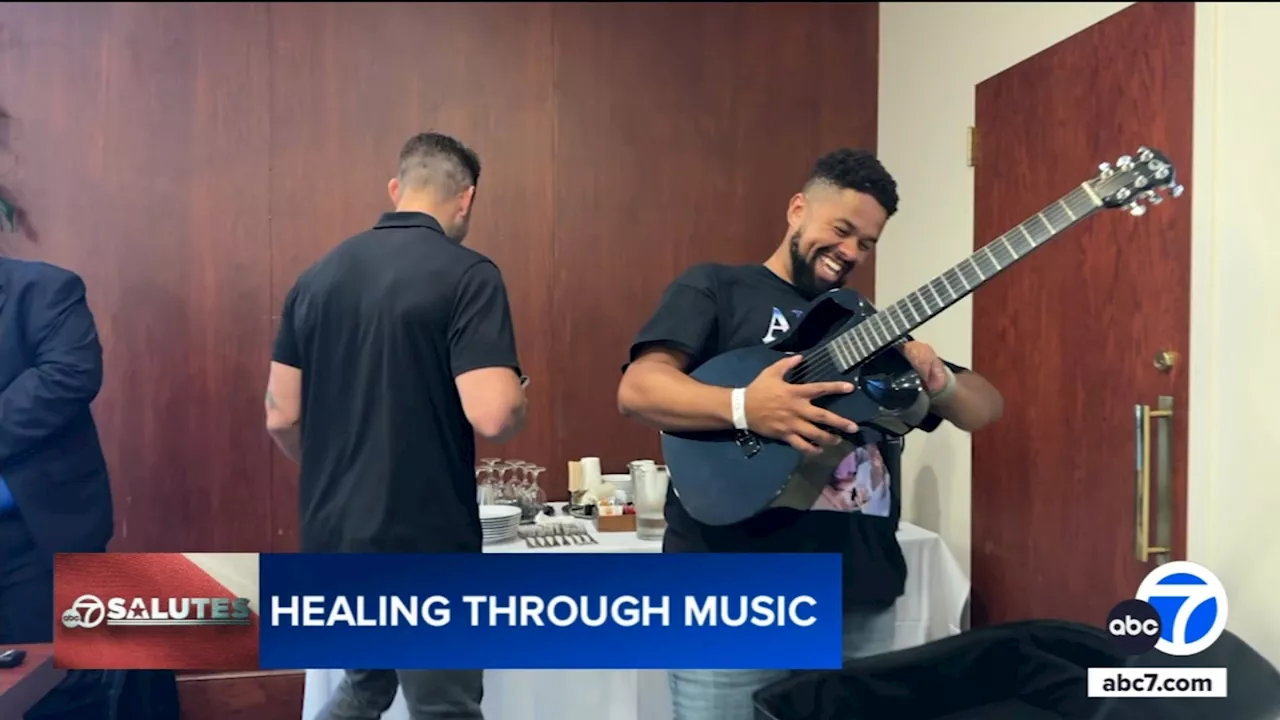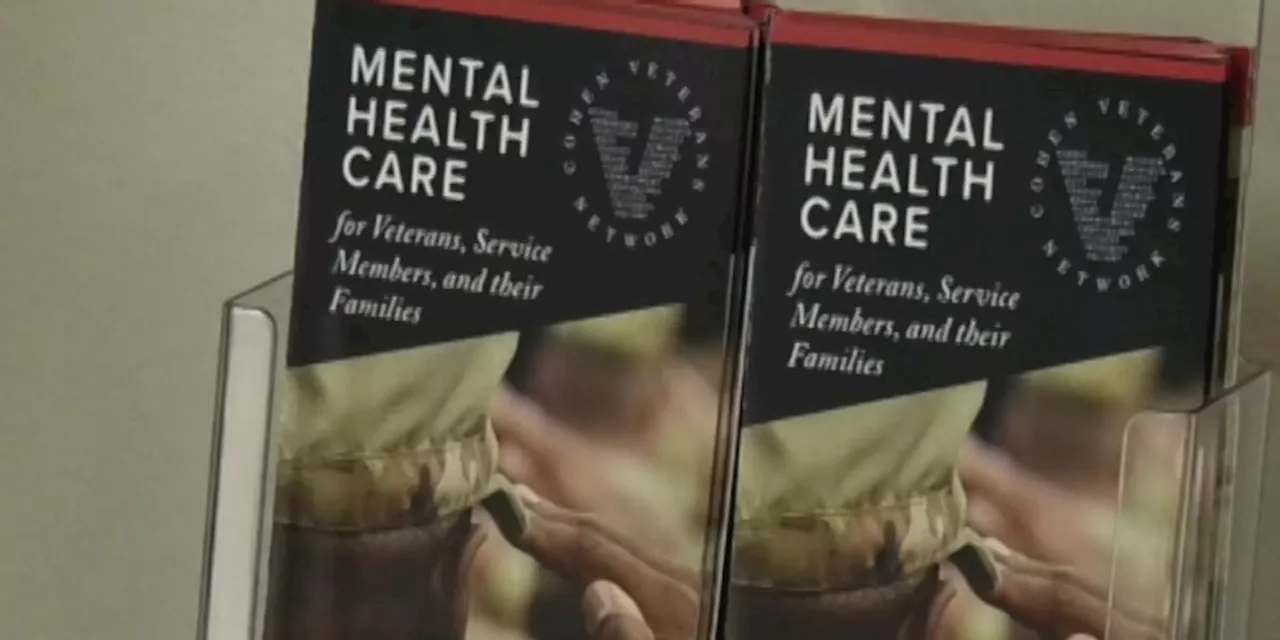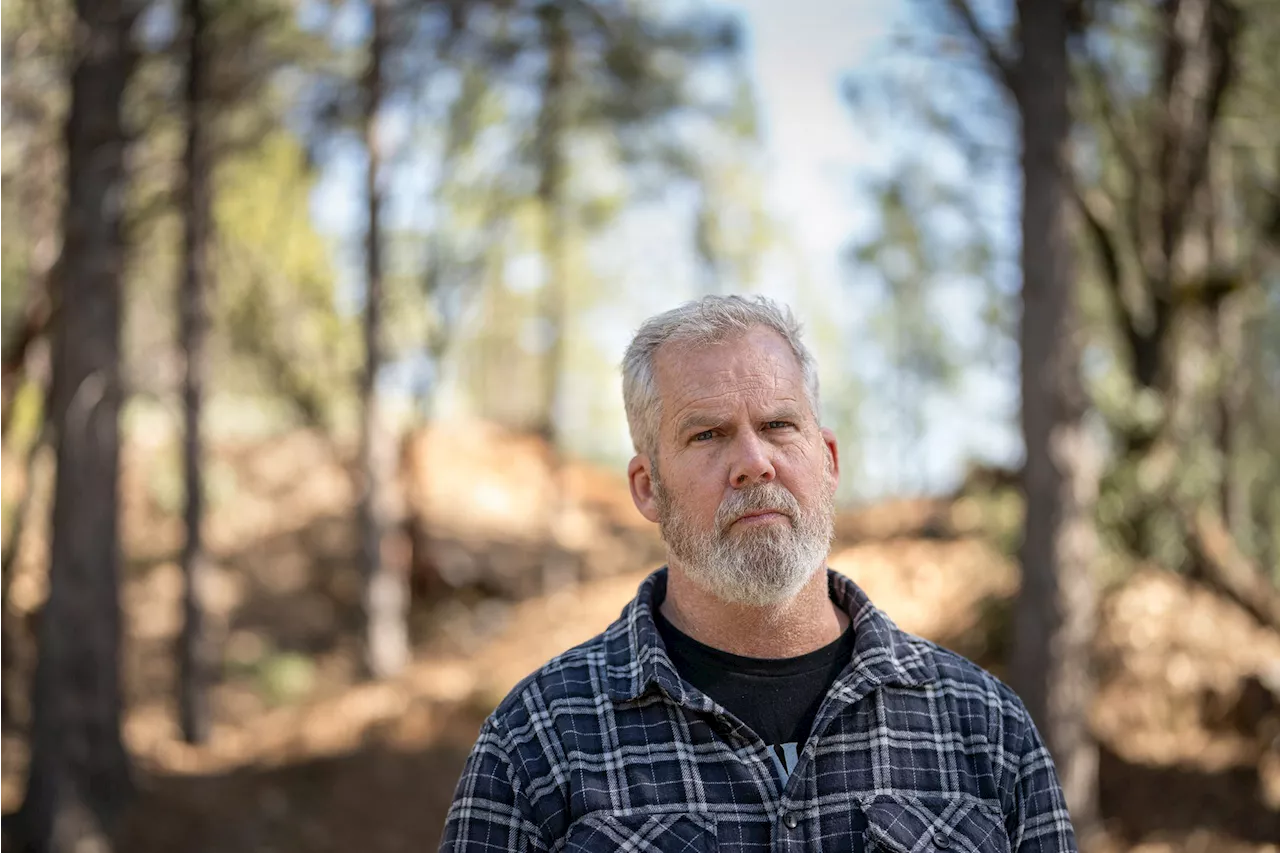California firefighters struggle to navigate workers’ comp. Their claims are more likely to involve PTSD — and are denied more often.
Get the news that matters to all Californians. Start every week informed.Retired Cal Fire Captain Todd Nelson, shown in Nevada City, suffers from a severe case of post traumatic stress disorder resulting from his 28-year firefighting career. Photo by Loren Elliott for CalMattersEven when suicidal, California firefighters struggle to find medical help and navigate the workers’ comp morass to pay for it.
No one tracks how many of Cal Fire’s 12,000 firefighters and other employees suffer from mental health problems, but department leaders say post traumatic stress disorder and suicidal thoughtsof wildland firefighters nationwide, about a third reported considering suicide and nearly 40% said they had colleagues who had committed suicide; many also reported depression and anxiety.
Michael Dworsky, a senior economist at the research institute RAND and one of the study’s project leaders, called workers’ comp “challenging and bureaucratic.” For decades, the California Legislature has wrestled with how to fix workers’ comp — in one year alone lawmakers proposed nearly two dozen bills.labor code, stipulating that firefighters and other first responders are considered at high risk for PTSD in the course of doing their job.
Paying out of pocket “caused severe financial strain in some cases. Some were eventually reimbursed by workers' compensation, but only after litigation and substantial delay. Some who pursued care through workers' compensation also noted that claim denials led to delays in the start of mental health treatment,” the RAND researchers wrote.
Firefighters and other first responders were about twice as likely to file PTSD claims as the general workforce — but the numbers are small, under 1% of all workers' comp claims. The RAND report was the most detailed look at the inequities between how physical and mental health are treated among firefighters and how first responders’ claims were handled compared to other workers. But the researchers struggled with incomplete data and difficulty identifying which claims were from firefighters.
Claims adjusters usually handle clear-cut cases where the date of injury can be pinpointed. More common among PTSD claims, though, is Nelson’s experience with cumulative trauma, with no paper trail of injuries or complaints. He can’t offer a single event as the origin of his trauma and no coherent chronology. Cal Fire folks tend to wait until their dam bursts before asking for the water to be turned off.
Nelson’s case is unusually severe and complex, requiring two extended stays in a facility that specifically treats firefighters to diagnose his conditions and finally set him on a treatment path of therapy and multiple medications. Niven considered suicide before Cal Fire’s employee support personnel helped him find a therapist, streamlining what had been a hit-and-miss process.
“They can't navigate this on their own, they really can't. They’ve got professional litigators opposing them,” said Richard Elder, ain Concord who regularly represents state firefighters. “The average claims adjuster on the job for more than a month knows more about the system than the average firefighter. They’ve got lawyers on speed dial. The injured worker is adrift. It’s like a do-it-yourself heart transplant.
During the interview, Nelson was fidgety, his thick fingers constantly worrying the items he had put on the table in front of him. One was a tiny aluminum cylinder containing medication for his seizures, another was a brass medallion, the iconic firefighter symbols of an ax and firehose nozzle stamped on one side and the serenity prayer on the other.
Even doctors can misunderstand. Diagnosing and treating PTSD and acute trauma like Nelson’s is notoriously difficult.who studies depression and suicidal behavior. “Your average primary care clinician is probably not willing to go down that road.” “He has to prove his world is falling apart,” Leticia Nelson said. “It's hard to explain to someone that you are broken. They look at you, they think that you look fine. They can't see in your brain. They can't see in your mind.”
Nelson recalls memories of his time as a firefighter during a treatment session. Photo by Cristian Gonzalez for CalMatters They are not alone. Lawyers say that the system is based on how to save money, is too often adversarial and deeply entrenched. “There is a disparity about how we treat, respond and react to behavioral health versus physical health,” she said. “Maybe we need to start talking about that disparity in workers’ comp. When you have approval rating that is flipped on its backside, that’s an obvious parity issue.”
She’s the keeper of the couple’s appointment schedule, she’s the chauffeur, the manager of the financial spreadsheet. And it falls to Leticia to devote untold hours on the phone with insurers and medical providers, birddogging bills, late payments and coverage lapses.
United States Latest News, United States Headlines
Similar News:You can also read news stories similar to this one that we have collected from other news sources.
![]() California YIMBY group endorses Silicon Valley billionaire’s California Forever projectThe group, while noting some concerns with the plan, still supports the vision overall. The decision marks one of the first statewide groups to support the Solano County-based initiative.
California YIMBY group endorses Silicon Valley billionaire’s California Forever projectThe group, while noting some concerns with the plan, still supports the vision overall. The decision marks one of the first statewide groups to support the Solano County-based initiative.
Read more »
 Chiefs 2024 Win Total Projection (Kansas City Set With Highest Win Total in NFL)Breaking down the projected win total for the Kansas City Chiefs for the 2024 NFL season.
Chiefs 2024 Win Total Projection (Kansas City Set With Highest Win Total in NFL)Breaking down the projected win total for the Kansas City Chiefs for the 2024 NFL season.
Read more »
 LA leads nation with most dog attacks on postal carriersCalifornia by far outpaced all other states, with a total of 727 attacks reported last year.
LA leads nation with most dog attacks on postal carriersCalifornia by far outpaced all other states, with a total of 727 attacks reported last year.
Read more »
 Veteran suicide epidemic: Current 'standard' PTSD treatment contributes to 22 deaths a dayEvery day, 22 veterans make the heartbreaking decision to end their lives.
Veteran suicide epidemic: Current 'standard' PTSD treatment contributes to 22 deaths a dayEvery day, 22 veterans make the heartbreaking decision to end their lives.
Read more »
 Nonprofit CreatiVets helps veterans struggling with depression and PTSD through the power of musicThis nonprofit utilizes music and other forms of the arts to help unleash a wave of healing for veterans struggling with depression and PTSD.
Nonprofit CreatiVets helps veterans struggling with depression and PTSD through the power of musicThis nonprofit utilizes music and other forms of the arts to help unleash a wave of healing for veterans struggling with depression and PTSD.
Read more »
 Military Report: Understanding PTSD in service members and veteransPTSD impacts a large portion of the armed services but as our understanding of the disorder improves, treatment and resources have improved as well.
Military Report: Understanding PTSD in service members and veteransPTSD impacts a large portion of the armed services but as our understanding of the disorder improves, treatment and resources have improved as well.
Read more »
